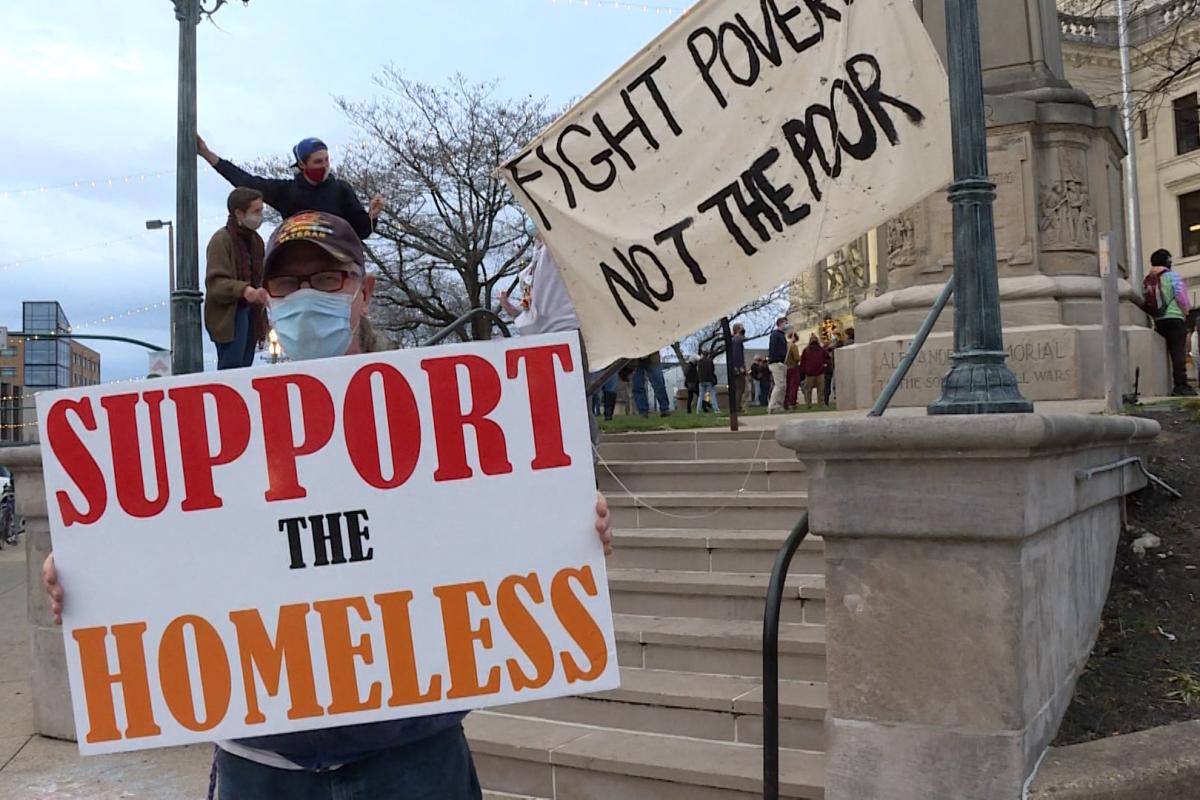
(Ethan Burks, WFIU/WTIU News)
Efforts to house people experiencing homelessness and increase housing options have continued during the pandemic. But early studies show the health and economic effects of COVID-19 will be extensive and long-lasting.
A survey in California indicated that the economic effects of the pandemic created more hardship than the virus.
According to a 2019 study from Regional Opportunities initiative, more than half of Monroe County residents who rent are cost burdened by housing expense.
Local groups published a regional plan in 2021 that aims to make homelessness rare, brief, and non-repeating.
The plan, called Heading Home, said housing insecurity is one of the contributing causes of homelessness in the area.
Heading Home highlights that issues of mental illness, substance use, medical emergencies, and joblessness or underpaid employment compound, can make finding housing more challenging.
Last winter, Beacon Inc. opened an emergency, low-barrier shelter for those experiencing homelessness.
But this year, that shelter won’t be available because of space, staffing, and other resource limitations.
We’ll talk with people who work to provide housing to those experiencing homelessness locally about what resources are currently available, and what is still needed.
You can follow us on Twitter @NoonEdition or send us questions for the show at news@indianapublicmedia.org.
Note: This week, our guests and hosts will participate remotely to avoid risk of spreading infection.
Guests
Forrest Gilmore, executive director, Beacon Inc.
Mary Morgan, United Way Housing Security Director
Kelsie Shields, Robin and Trisha's House director of operations






